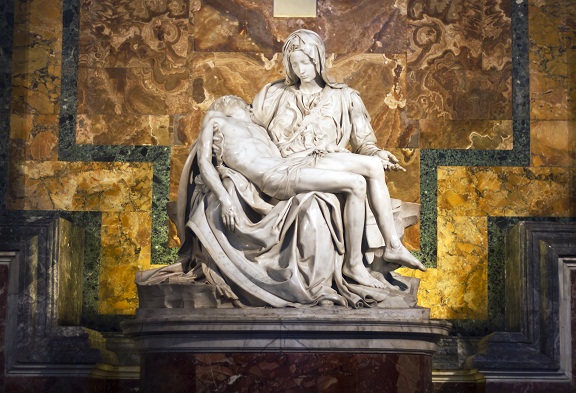Are you going on holiday to Rome in Italy? Would you like to know a little about the history of Rome before you go? Our guide to the history of Rome gives you the facts & information you’ll want to know.
The origins of Rome as an inhabited settlement are believed to date back to approximately 2,800 years ago. According to legend, a she-wolf suckled two young boys who later went on to found Rome, although this story is not given much credence in historical circles. What is known is that the people who came to populate Rome were drawn mainly from the Etruscan civilisation as well as other peoples who had previously lived in settlements in the surrounding mountains. Rome brought about the unification of these peoples and it is from here that the history of Rome as a great power begins.
History of the State of Rome
The history of Rome as a world power beings around two thousand years ago when Augustus became the First Emperor of Rome. Augustus emerged as the Emperor after a brief power struggle which was initiated by a power vacuum that occurred after the assassination of Julius Caesar. Roman art was developed considerably under the patronage of Emperor Augustus. The Roman state remained strong and increased its dominions for several hundred years until finally in the fifth century AD the Vandals invaded Rome bringing an end to its power. From this point forth, the mantle of Roman civilisation was passed on to the Eastern Roman Empire or Byzantine.
Christian History of Rome
The official religion of ancient Rome was a pagan religion that involved worship to many different gods. The history of Christianity in Rome began in the 1st century AD when the apostles Peter and Paul travelled to Rome and began to preach Christianity to the population of Rome. Although Peter and Paul had some success in converting a number of individual citizens of Rome to Christianity, it was not until a few hundred years later that Christianity became the dominant religion in Rome, and at many times life for early Christians in Rome was extremely repressive. The rise to power of the Byzantines with their capital in modern day Istanbul brought about a change in favour of Christianity in the history of Rome.
Renaissance History of Rome
The renaissance is often considered to be the golden period in the history of Rome. During the 15th and 16th centuries Rome became the centre of innovations and developments in architecture and art. While the renaissance is often thought of as being a pre-cursor to secularism because of its emphasis on nature and reality, it is interesting to note that much of the renaissance art and buildings that are visible in Rome today not only have distinct religious themes, but were also commissioned by the Popes of the day including Pope Gregory the Great who is considered to have patronised renaissance art.
16th Century History in Rome
The 16th century is thought of as the high renaissance period in the history of Rome, where artists and architects had reached the pinnacle of their respective disciplines and a host of new buildings were changing the face of Rome’s landscape. Unfortunately, this progress was largely set back in 1527 when Charles V of Spain invaded Rome.
17th Century history of Rome
The 17th century is considered to be a period of history in Rome that saw a great building boom influenced by the baroque movement. Buildings in Rome from this time include churches, fountains and various other public buildings.





